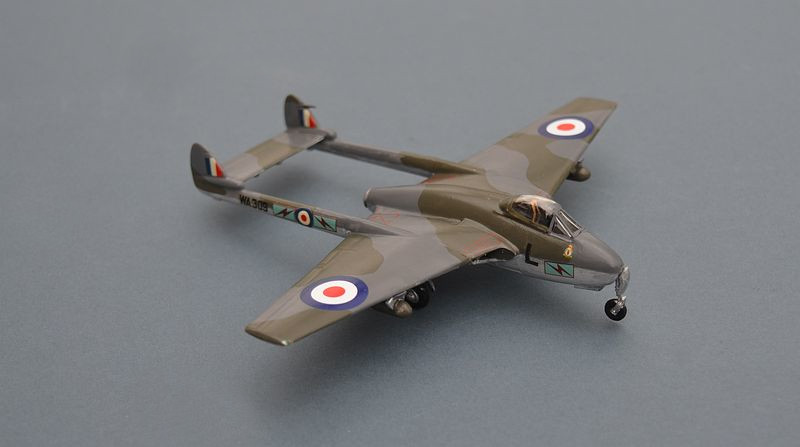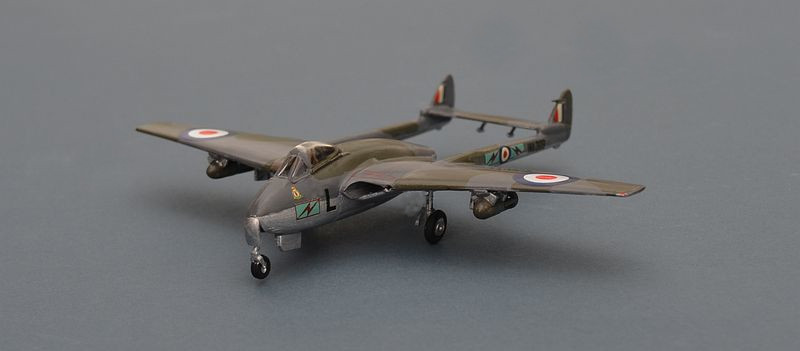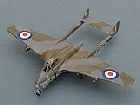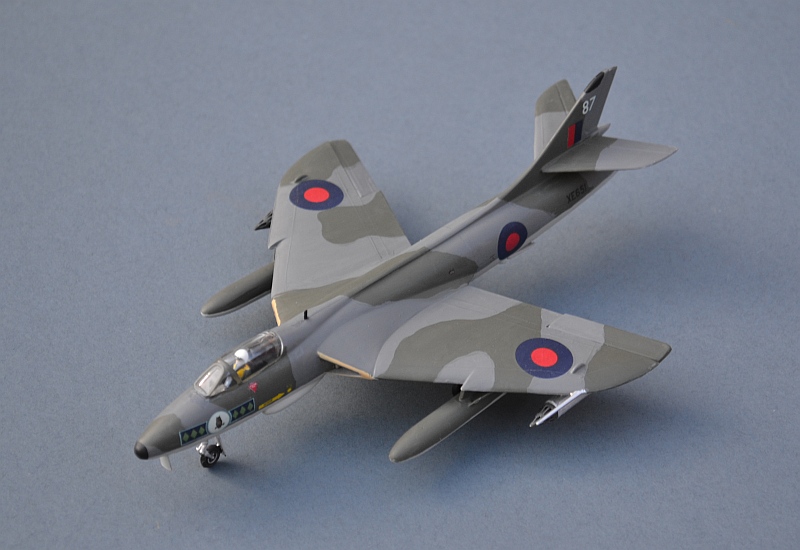
The Hunter has to be one of the most attractive jet fighters ever built. Long, thin and sleek, it combined an advanced engine with excellent aerodynamic design, to give a well behaved and versatile aircraft. Unfortunately, the long gestation period needed to get the design right meant that it quickly became obsolete as a fighter and was moved to the FGA role instead, with additional fuel and pylons for ground attack weapons. 58 Sqn operated Hunters from 1974 to 1976, training pilots in anticipation of the arrival of the new SEPECAT Jaguar aircraft.
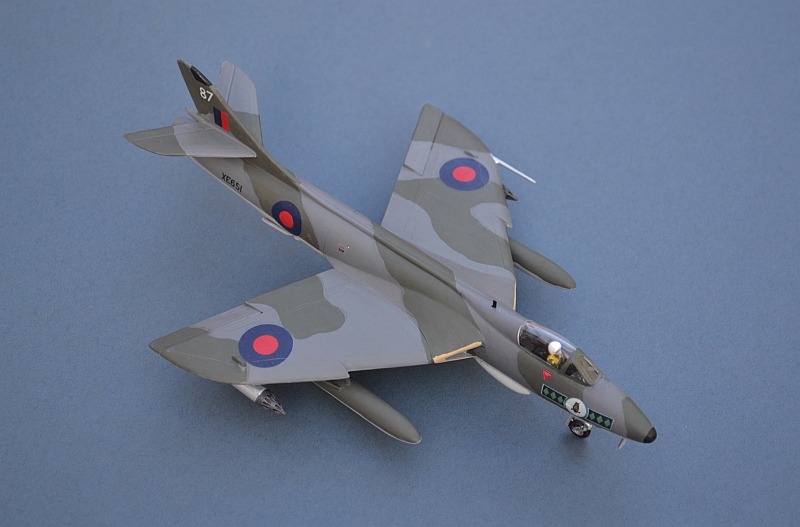
Although all of the RAF's Hunters have long gone, the Hunter still continues in service around the world, with the Lebanese Air Force reinstating its very small Hunter Fleet to operational service in 2010. During the 1970s, the RN acquired a number of surplus RAF Hunters and continued to use them in the training and Fleet Requirements role until the early 1990s.
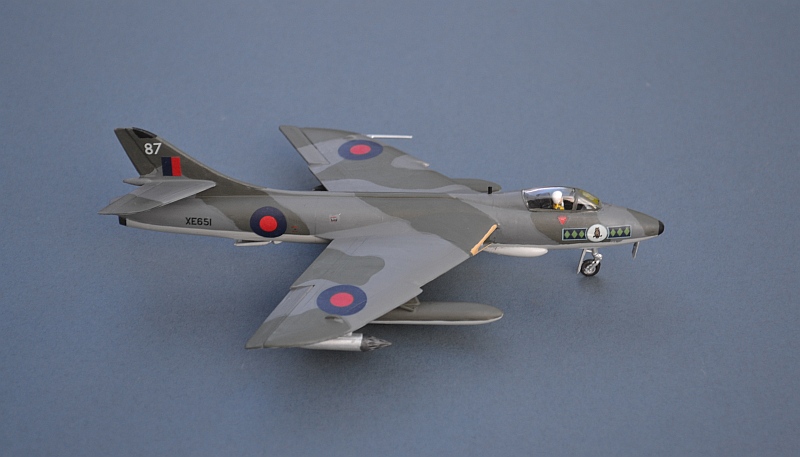
The Javelin interceptor was chosen by the RAF over the contemporary DeHavilland DH110
(later to become the Sea Vixen). It suffered from an extraordinarily long period
of development (by the standards of the day -
This is the old Airfix kit -
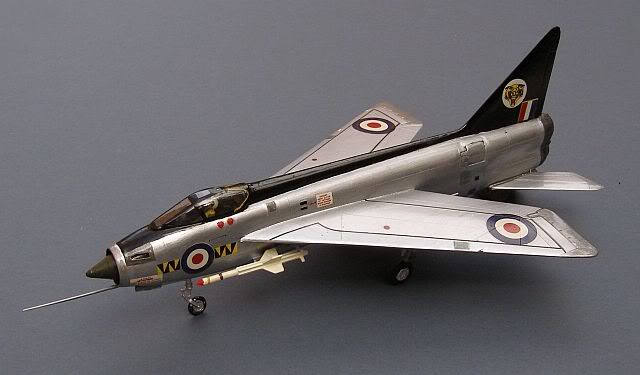
The Lightning was one of the few British aircraft to survive the Sandys' Defence review of 1957, apparently "because it was too far advanced to stop". It went on to become an icon of the RAF during the 1960s, 70s and even into the 1980s. Although it was always short legged, it had phenomenal performance, particularly when climbing off the deck. The Airfix kit represents the F.1A version, with straight wings, pointed fin, Firestreak IR missiles, guns and small belly tank.
RAF Lightnings from Leuchars in Fife, Scotland, were nominated to provide air cover for RN ships operating in the North Sea and Northern ADR.
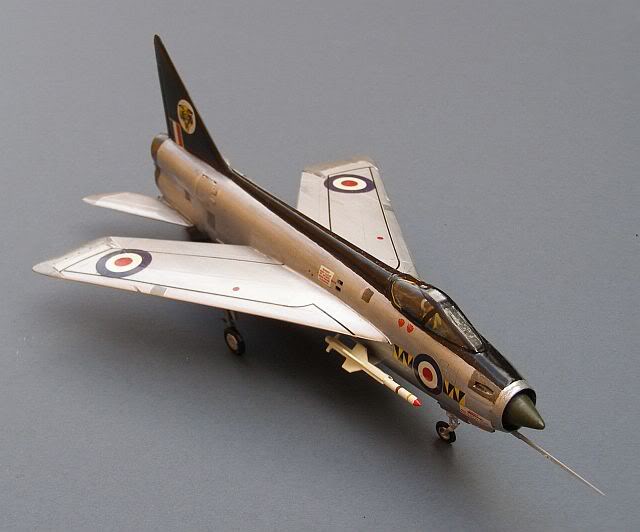
Commonwealth Trans-
The Auster AOP.6 was introduced in 1949 as a successor to the wartime Auster V, itself
a development of the US Taylorcraft Model A civilian aircraft. In 1955, two aircraft
were modified to take part in the 1955-
The expedition, led by Dr Vivian Fuchs and Sir Edmund Hillary, was the first to reach the South Pole overland in 46 years, preceded only by Amundsen's and Scott's expeditions in 1911 and 1912; The second crossing of the continent did not take place until 1981, during the Transglobe Expedition led by Sir Ranulph Fiennes.
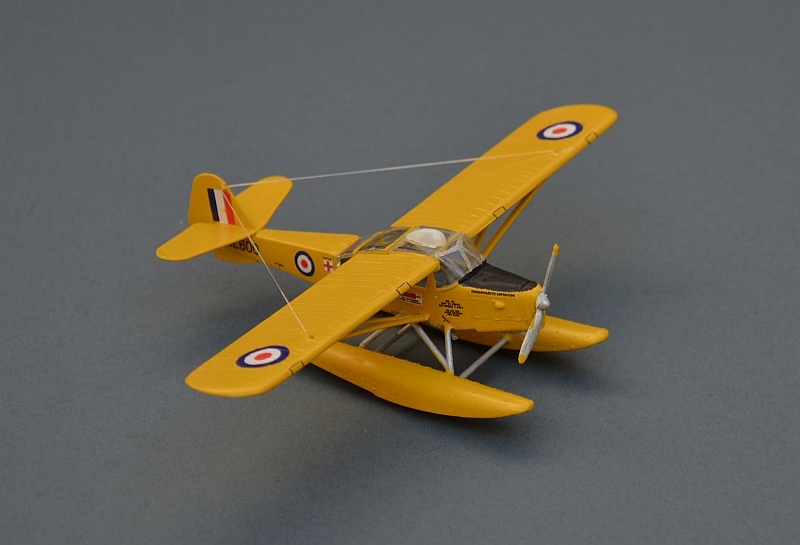
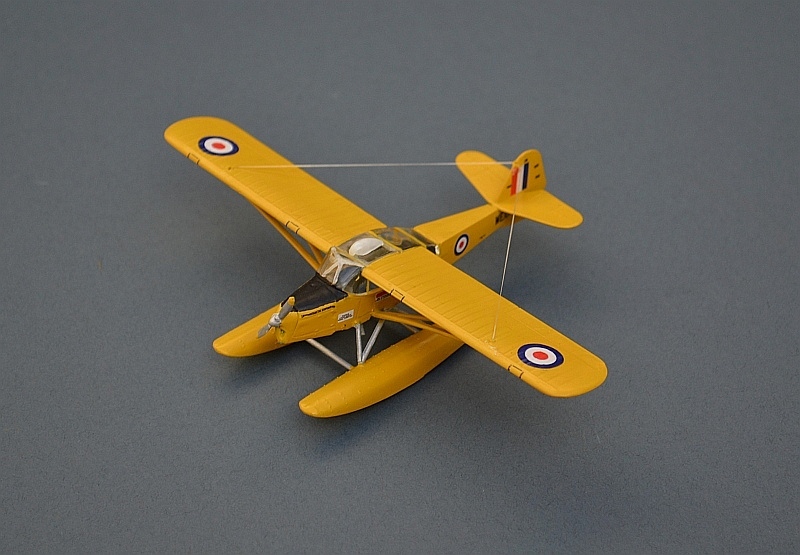
Friends & Allies -
Fixed wing aircraft of the Royal Air Force (1945-
(many with some sort of naval connection!):

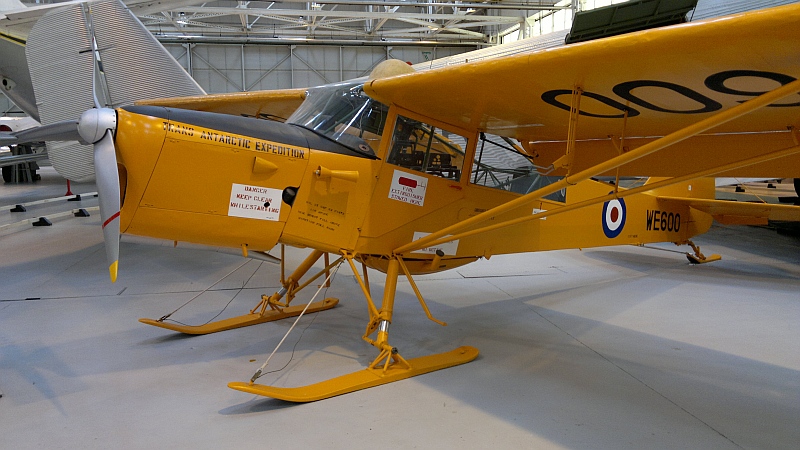
The real aircraft in 2011, at the RAF Museum, Cosford

The Airfix FGA.9 Hunter isn't a bad kit, although the recent Revell issues have far eclipsed it. However, it remains ideal for a quick fun build. I don’t find the supplied decals particularly inspiring (although in my issue they are well printed and comprehensive), so instead I have used a spare set from a Matchbox kit. Link to build page
The Airfix FAW.9 was modified from the mould for the Heller T.3. As such it has some
deficiencies around the rear of the aircraft, with a fuselage and tailpipes that
are noticeably too narrow for the larger re-
I first built one of these kits back in the 1970s, at which time Airfix issued it
in a very bright yellow plastic. This one came in a much more sober grey, requiring
a coat of white and two yellow top coats to achieve the same effect. Unfortunately
Airfix don't provide the correct tall tail-
This is a typical 1970s Airfix kit, with reasonable fit, but limited detail. It is quite fiddly to build and the undercarriage is very delicate when assembled. Decal options included a Swedish aircraft, with later issues covering the more recent black RAF scheme and a different camouflaged Swedish scheme.
The Bulldog was developed from a Beagle Aircraft design and built at Prestwick by Scottish Aviation (later British Aerospace). Widely used by the RAF and Swedish armed forces from the early 1970s until the turn of the century, Bulldogs also saw service with many other air arms around the world.
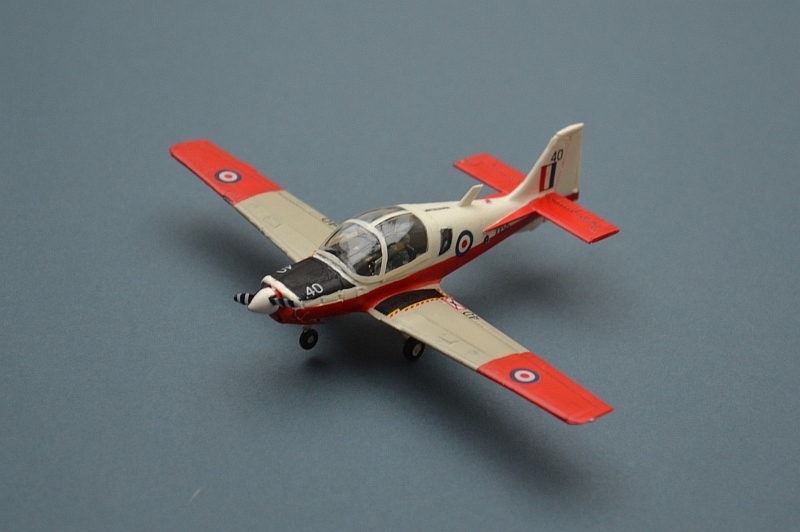
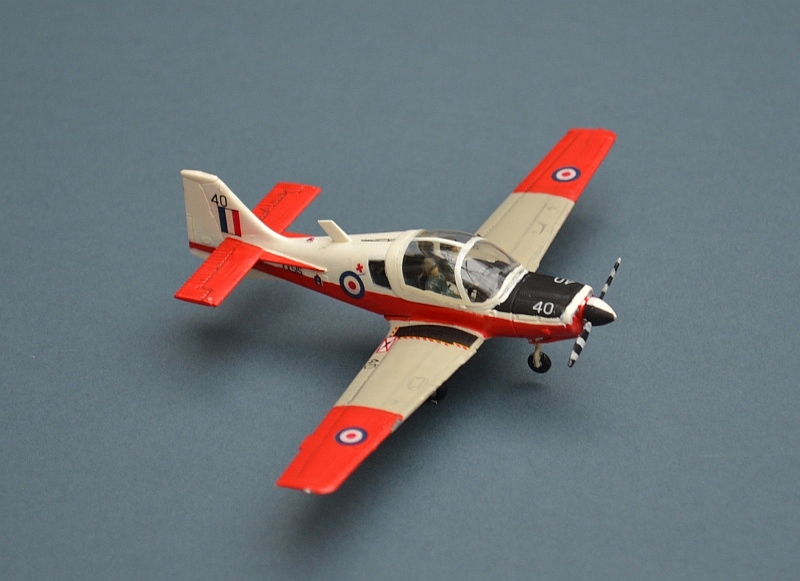
Release of this new mould Airfix kit was awaited eagerly, but initial issues proved
to have flaws caused by mould damage. Repairs delayed re-
Other than that, fit elsewhere is very good, although I had some problems seating the main undercarriage legs and needed a little filler on the upper fuselage joint and behind the rudder. The cockpit decals do not fit at all well, and the slightly brittle plastic that Airifx hav eused means that fine parts such as the pitot tube and control column are easily broken when removing from the sprue.
Recommended for those with a steady hand and plenty of patience!
The Swift was always going to be eclipsed by the Hawker Hunter, but the Air Ministry was keen to retain a second source should the Hunter programme run into problems, as it certainly did. Developed from the Supermarine Attacker, with a pedigree stretching back through the Spiteful to the Spitfire, the Swift entered service in 1954, as the RAF’s first swept wing fighter.
Despite considerable efforts by Supermarine, it too suffered serious development issues, not least a tendency to dangerous wing tip stalls when landing, requiring a redesign of the wing to include a distinctive saw tooth in the leading edge. An inability to light its afterburner at high altitude meant that its days as a fighter were limited, but the Swift quickly found a new role as a very effective low level reconnaissance aircraft, a role that it retained with 2 RAF Germany Squadrons until the early 1960s.
© www.gengriz.co.uk
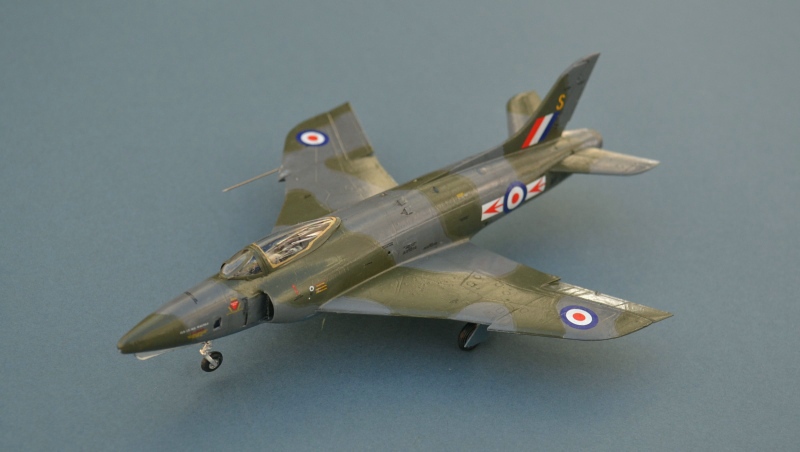
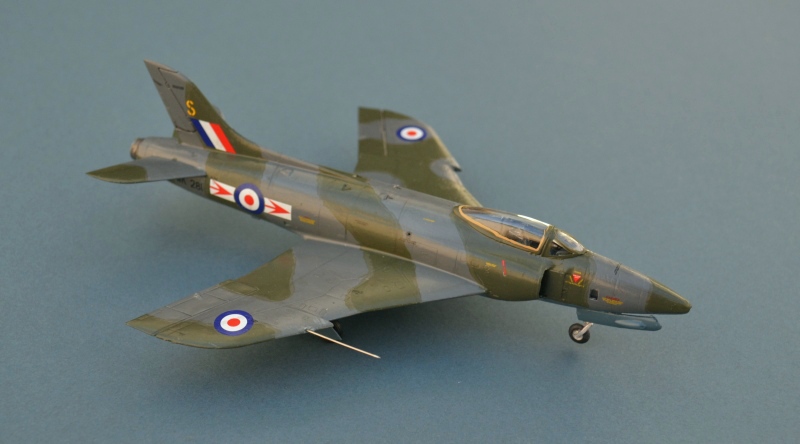
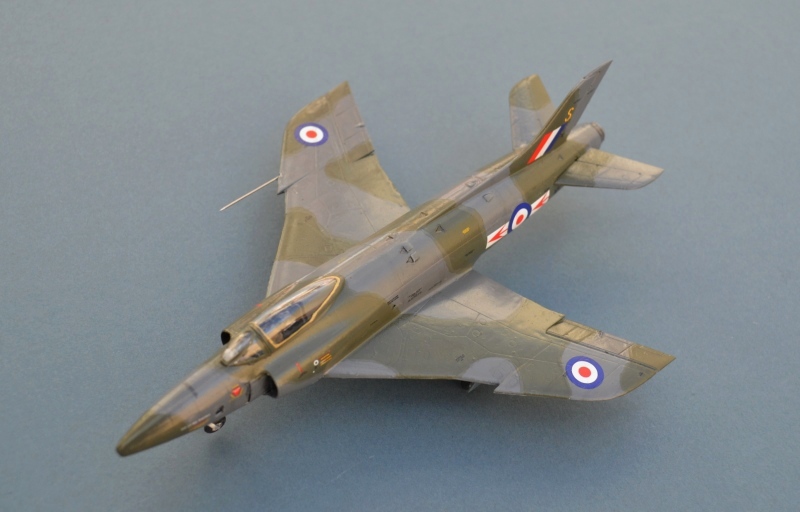
Airfix have snuck out a number of superb cold war jets models amongst their newest issues, including the Vampire, Swift and this diminutive Gnat, representing the iconic RAF jet trainer of the 1960s and 1970s. The kit has slightly deeper than optimum panel lines, goodness knows what the pilot figures are wearing on their heads and some of the stencil decals are ridiculously small, but other than that ,this really is an excellent little kit.
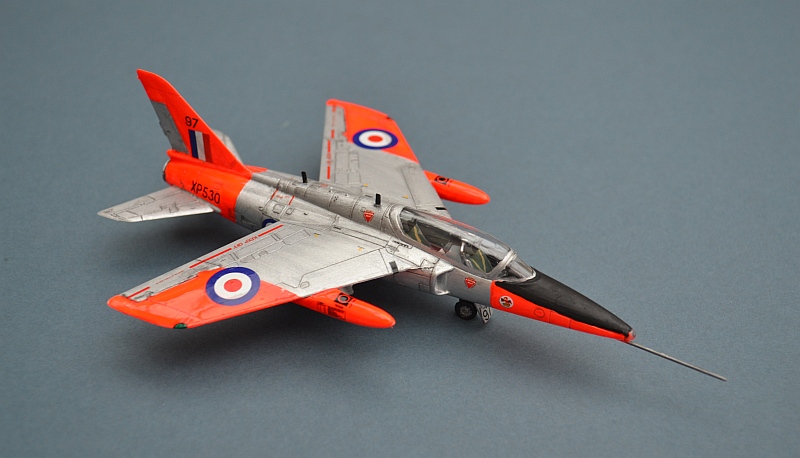
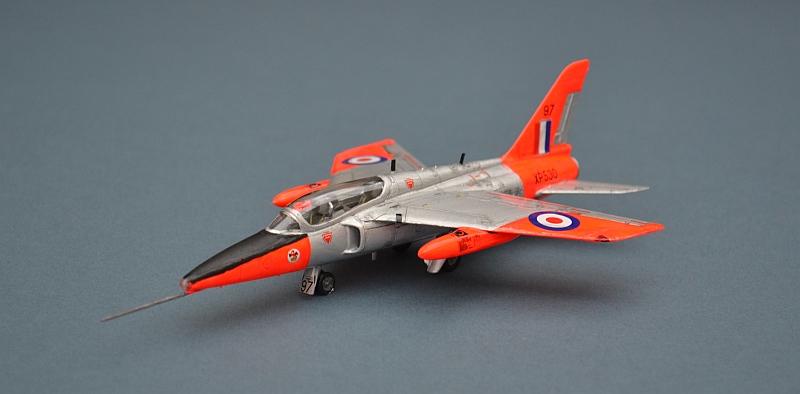
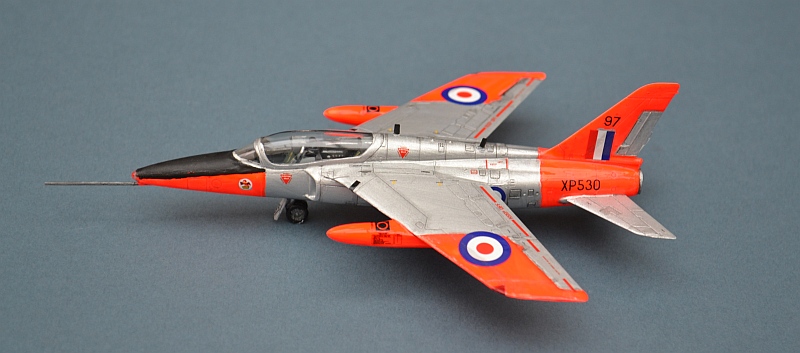
The Gnat was originally designed as a private venture low-
After modifications to add a larger wing, simpler control surfaces and a second seat, it became the standard RAF jet trainer and the mount of the Red Arrows. Light, agile and very fast, the single seat Gnat saw front line service with the Finns and the Indian Air Force, the latter including a very creditable combat performance against Pakistani Sabres and Starfighters.
Yugoslavia also bought two Gnats for evaluation; although they did not purchase any
more, the Gnat’s influence is clear in several follow-
DeHavilland DH100 Vampire FB.5 -
RAF Turnhouse, Scotland, 1955.
Out of all the 1/72 Vampire kits currently available, I still believe this to be the best. This is an original Heller release, but the kit has also appeared in boxes by Airfix and Revell.
The Vampire first flew during WW2 and was widely used by the RAF as a ground attack aircraft alongside Meteor interceptors. Powered by the DH Goblin jet , its tail boom configuration ensured that all the limited power available from this early engine could be used.
The FB.5 variant was fully optimised for ground attack with over 900 built for the RAF alone.
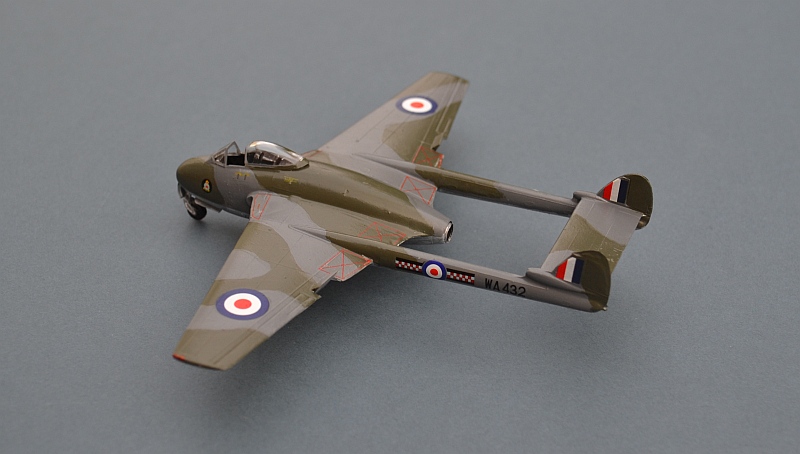

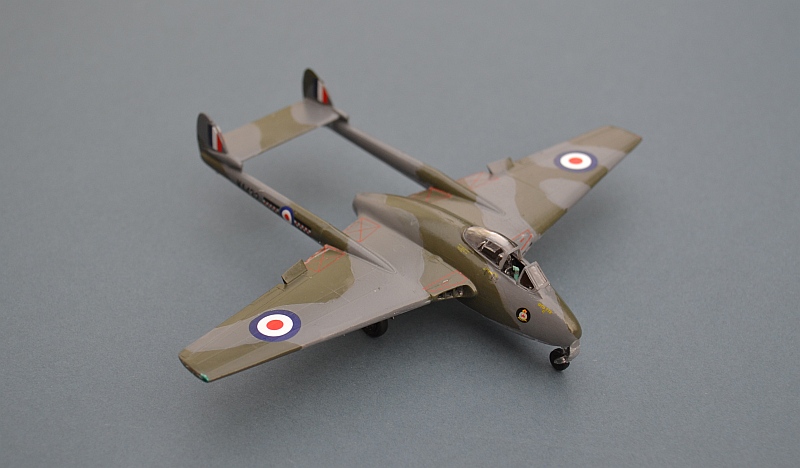
This is the ancient Airfix kit, long past its best. Heller-
The Folland Gnat was originally developed as an ultra lightweight fighter, but whilst the Indian Air Force and Finnish Air Force used Gnats enthusiastically in this role, lightweight fighters did not sit well with contemporary RAF doctrine (think Javelin instead).
However the capabilities and potential of the Gnat were recognised, so instead the
RAF encouraged development of a slightly larger 2-
The first RAF aerobatic team to use the Gnat was the Yellowjacks in 1964. One year later they were reformed as the Red Arrows, who continued to use the Gnat until replaced by the Hawk in 1979

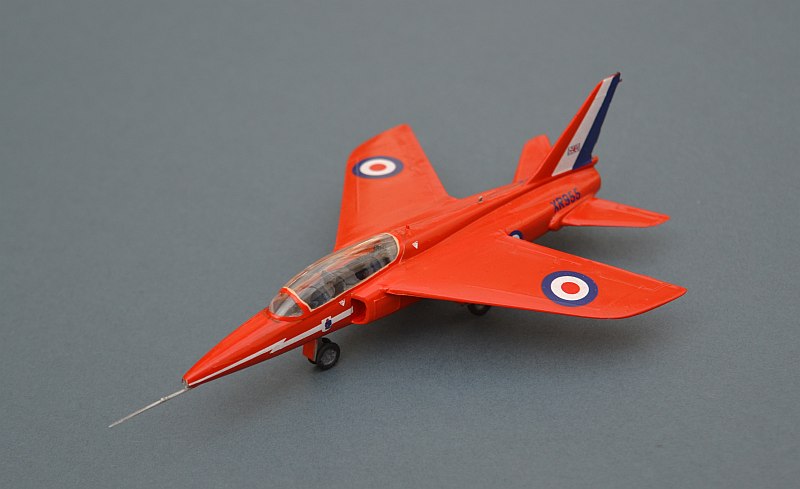
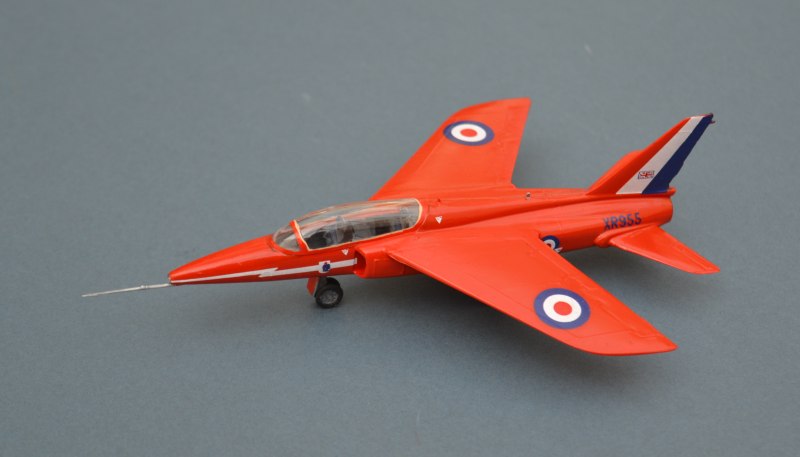
One viable alternative to the Airfix offering is the FROG FGA.9 kit. In some respects this is the finer kit, although it lacks detail and has an over prominent canopy (whereas Airfix is perhaps too flat). Link to build page
54 Sqn’s Hunters acted in the close support role, armed with rocket packs and their internal guns. Although based at West Raynham in Sussex, the aircraft saw service around the world, including the acrimonious withdrawal of British forces from Aden.
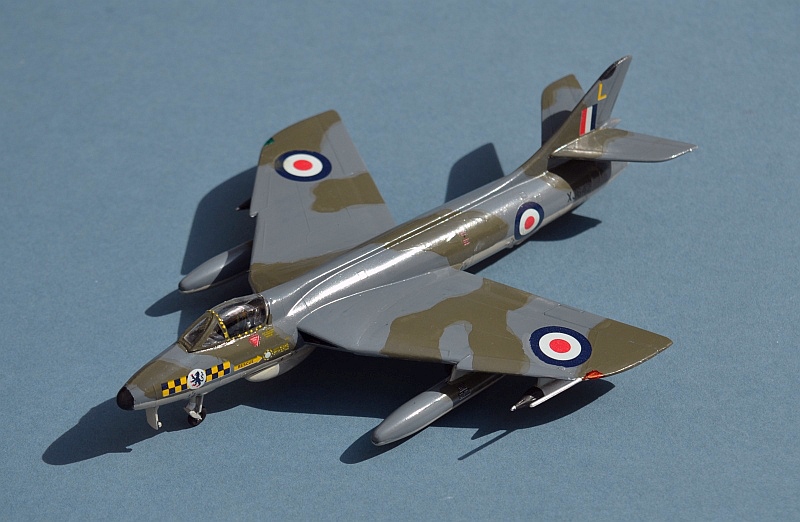
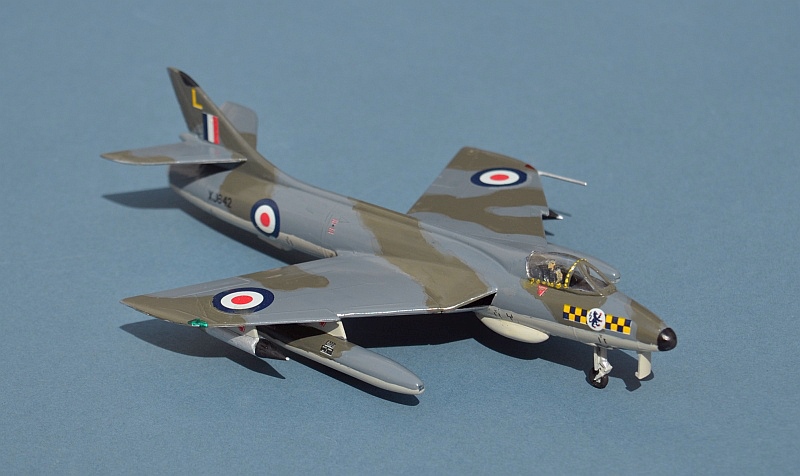
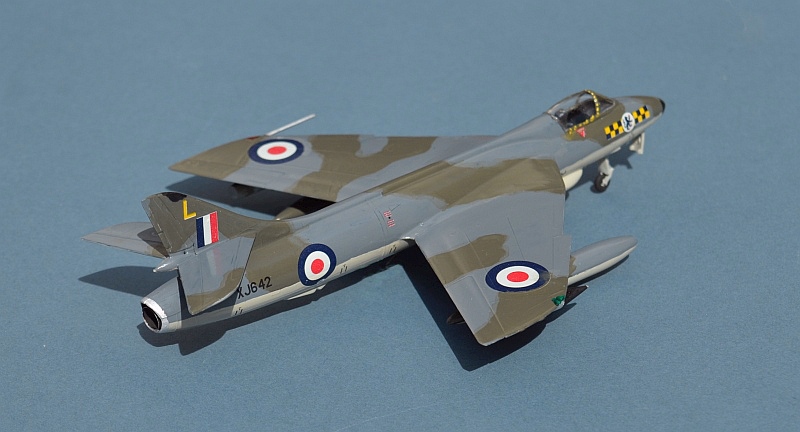
This is the 1970s era FROG kit, which is rather simple, but looks good when complete. Link to build page
The Canberra was an outstanding design, conceived during the final years of WW2 to take advantage of newly developed jet engines. It made its first flight in 1949, becoming the first jet aircraft to make a transatlantic flight in 1951 and establishing a world height record of 70,310 ft in 1957.
Intended as a fast light/medium bomber in the same vein as the legendary Mosquito, its versatility saw it employed in a wide range of roles from nuclear strike, through reconnaissance, low level interdiction, EW/ESM and target towing. Several fighter proposals were also considered, but not taken up. Licence production of bomber variants took place in Australia, with Martin aircraft producing the B.57 variant in the US.
The B(I).8 was specifically designed as a low level interdictor, replacing the characteristic bubble canopy with an offset fighter style and reducing the crew to a pilot and navigator. It remained in service until 1972, performing both conventional and nuclear roles.

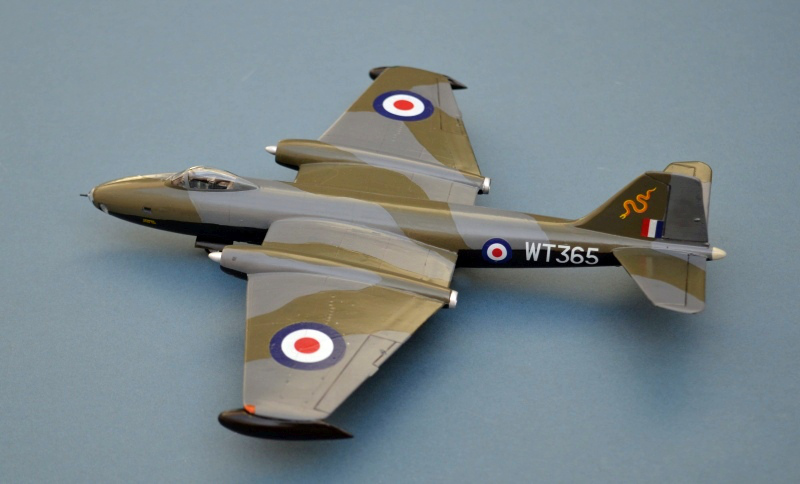
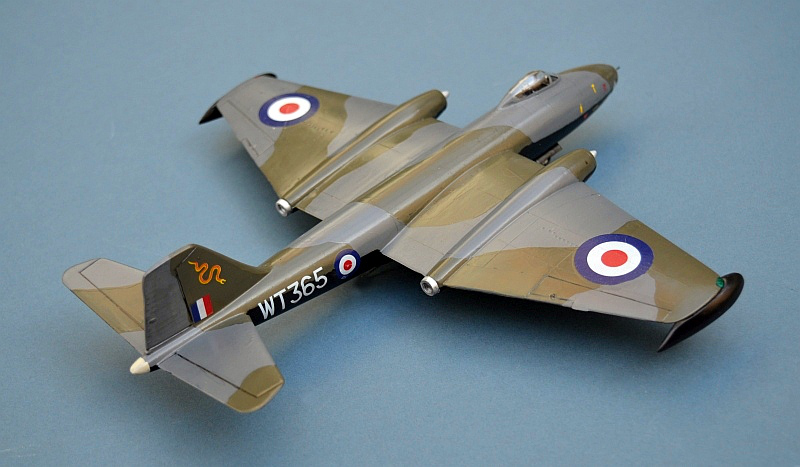
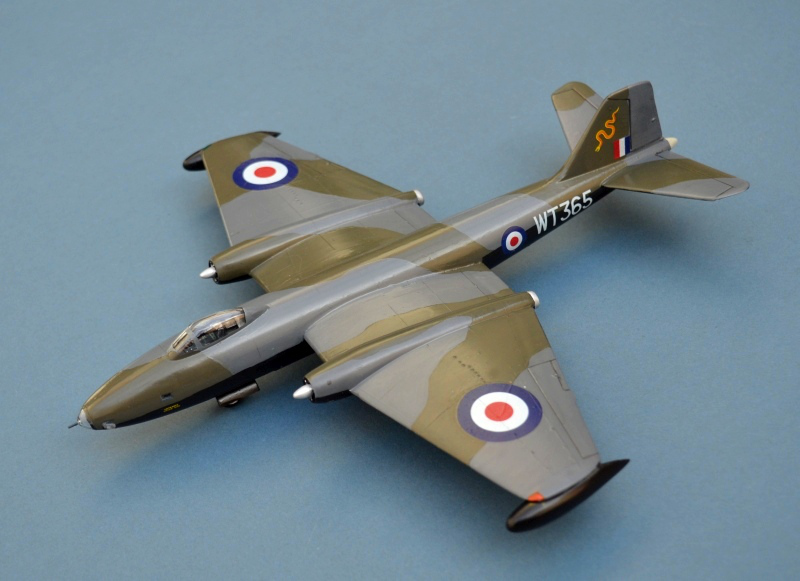
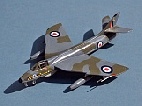
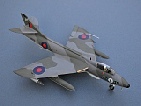
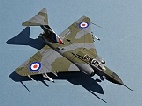

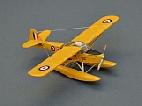
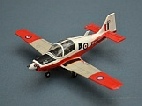
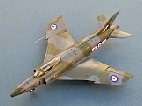
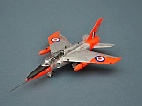

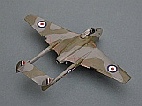
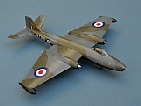
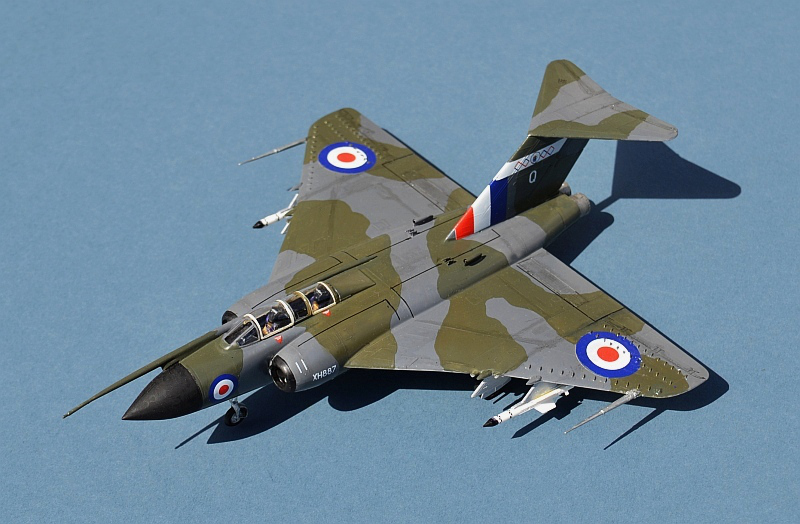
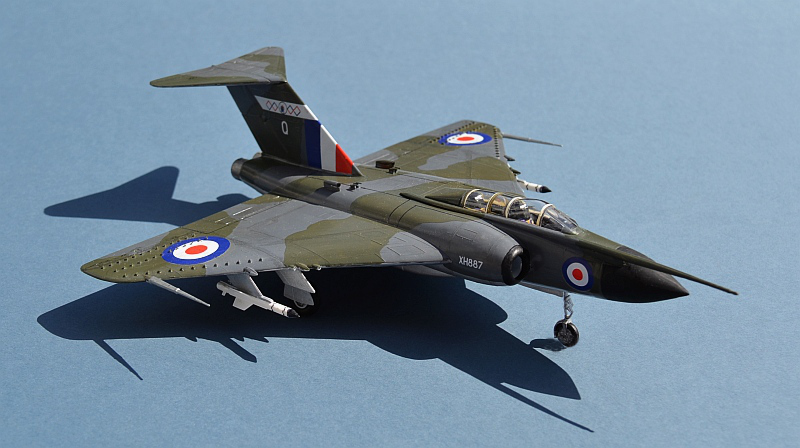

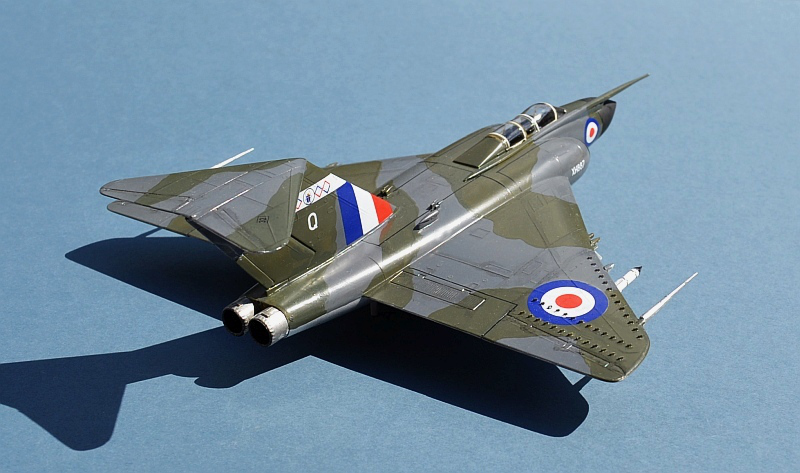
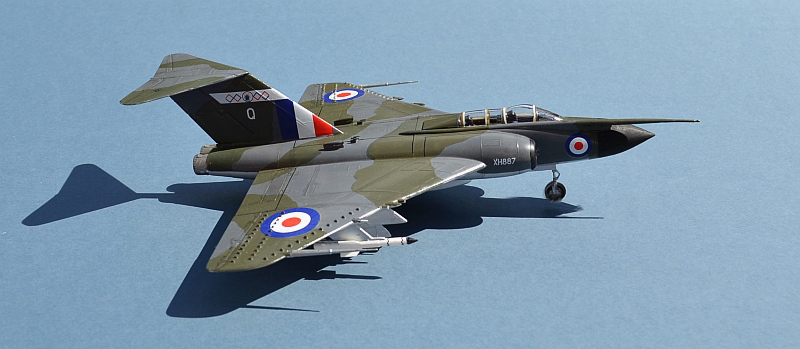
Another 1970s era FROG kit. No longer really a viable kit, given the superb modern Airfix kit. Link to build page
From 1970 onwards, surplus RN Buccaneers (and their anti-
This aircraft is loaded with four AS-
MARTEL was equipped with a very large warhead and was certainly more capable and reliable than the US Shrike equivalent, with a much greater range (about 40 miles) although it was much slower.
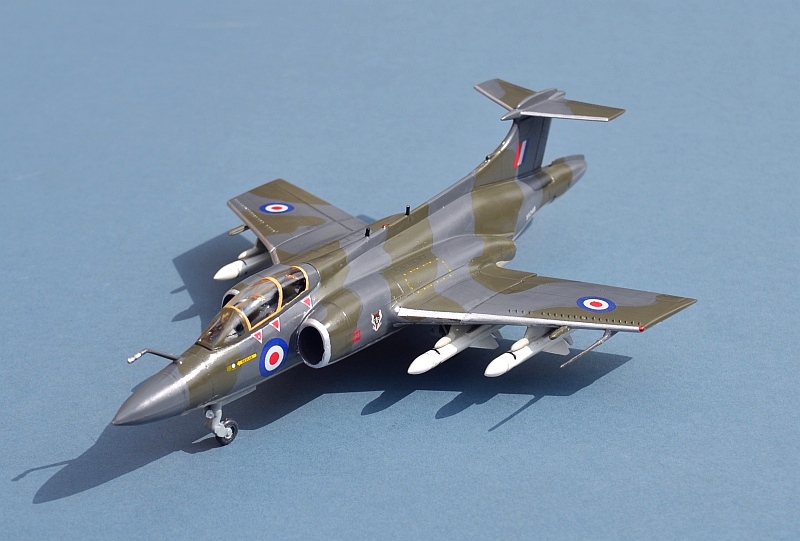
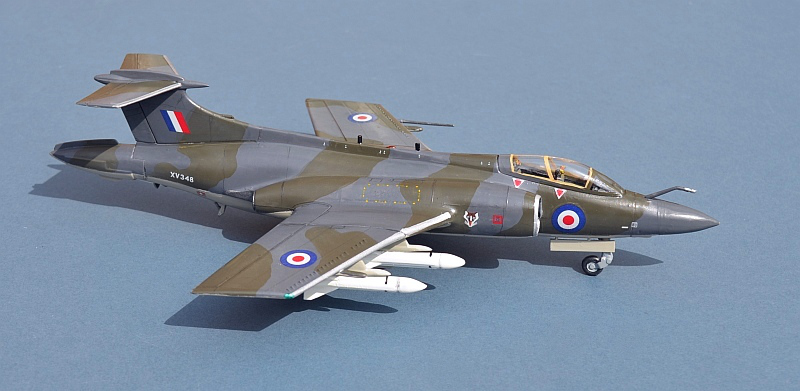
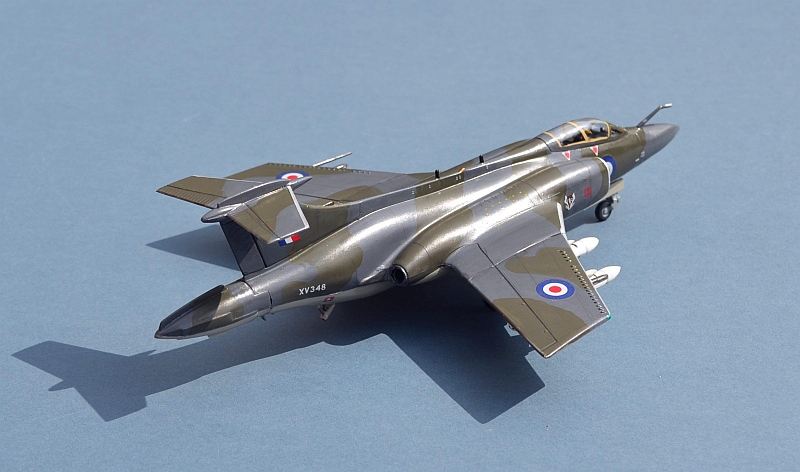
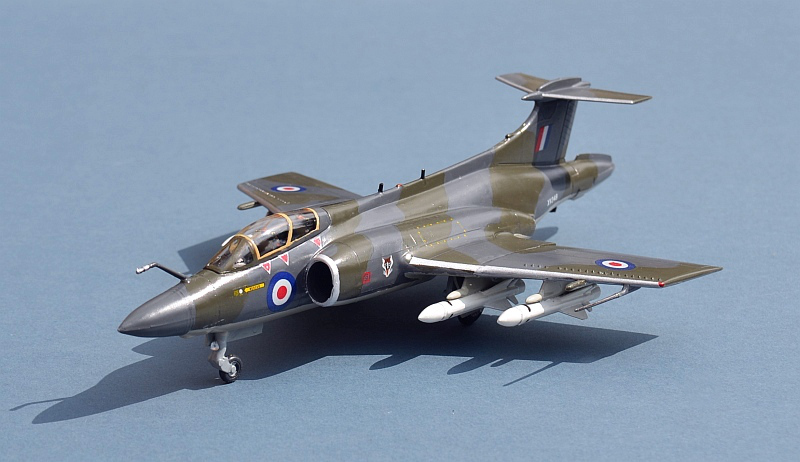

This is the marvellous Fujimi Phantom FGR.2, with Xtradecal markings. Link to build page
The Phantom FGR.2 was originally procured by the RAF as a ground attack and reconnaissance
platform following the failure of the P.1154, F-
111 Sqn moved to RAF Leuchars from RAF Coningsby in 1975, retaining their FGR.2s,
but joining 43 Sqn’s Phantom FG.1s in the Northern Air Defence Region. From here
they covered the very busy North Sea, Norwegian Sea and North Atlantic regions, where
they regularly intercepted Soviet aircraft probing the UK’s defences. The FGR.2
was less well suited to air defence role than the ex-
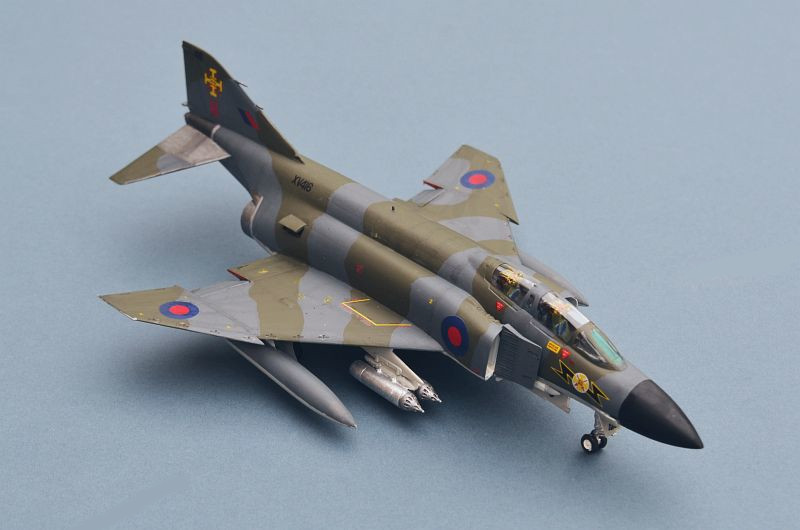
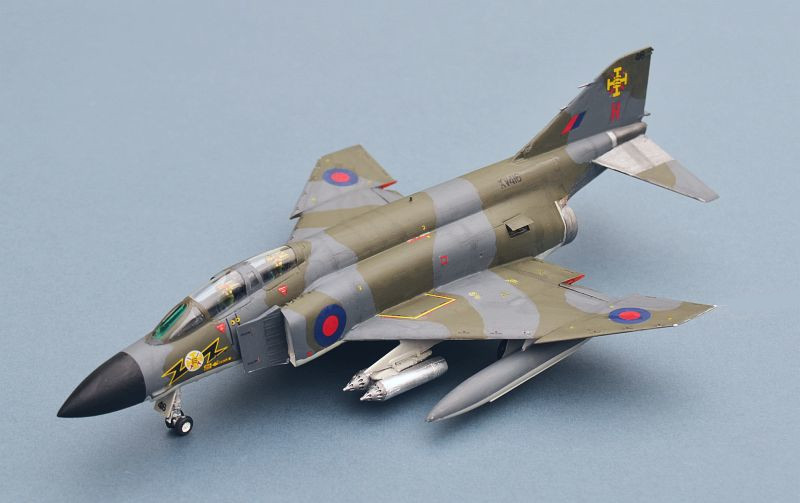
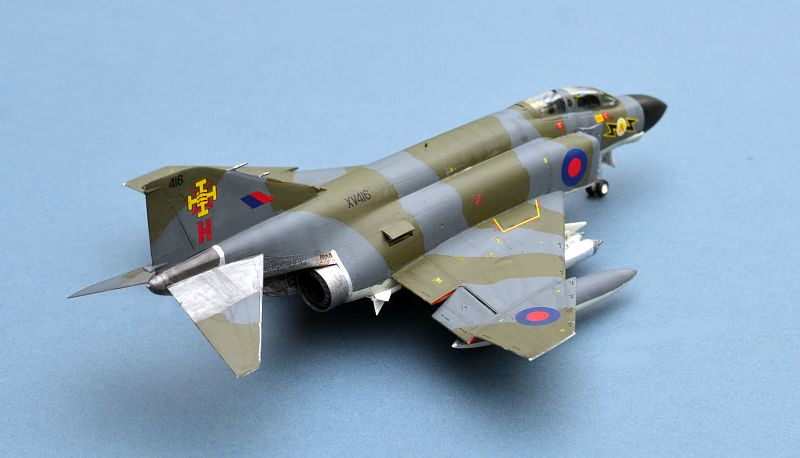
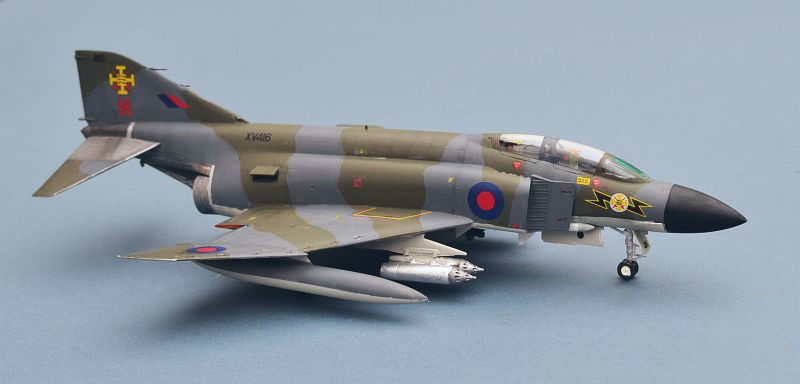
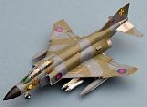
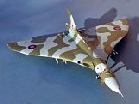
This is the older (1983) Airfix kit Link to build page
The Avro Vulcan entered service with the RAF in 1956 in the high altitude nuclear
bombing role alongside its V-
To try and restore capability, Vulcans (and Victors) were armed with the Blue Steel
stand-
The Vulcan's only combat missions took place during the 1982 Falklands War. Whilst undoubtedly demonstrating the outstanding skill, courage and organisation of the Vulcan and Victor crews and support staff involved, the Black Buck raids were of very limited military effectiveness and required enormous resources. Only one of 21 bombs dropped in Black Buck 1 actually hit the Port Stanley runway and this was a better result than predicted. Almost every Victor tanker that the RAF possessed was needed to get just one aircraft over the islands and back.
Although it confirmed the UK's capability to reach the islands without an aircraft
carrier, the RN was required to fly very risky Sea Harrier CAP and BDA missions to
protect the bombers on their run-
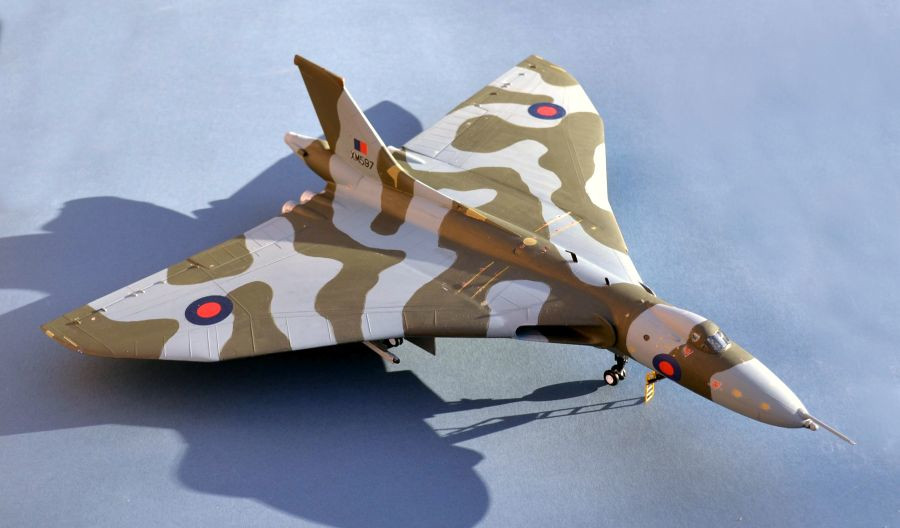
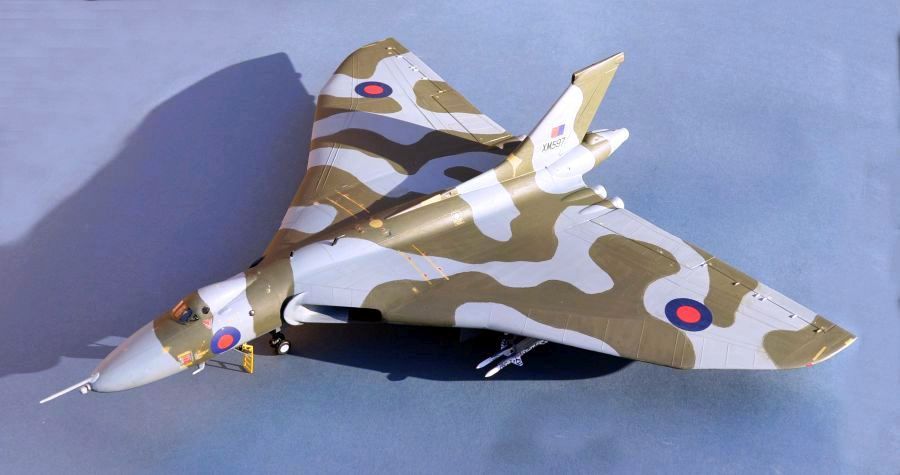
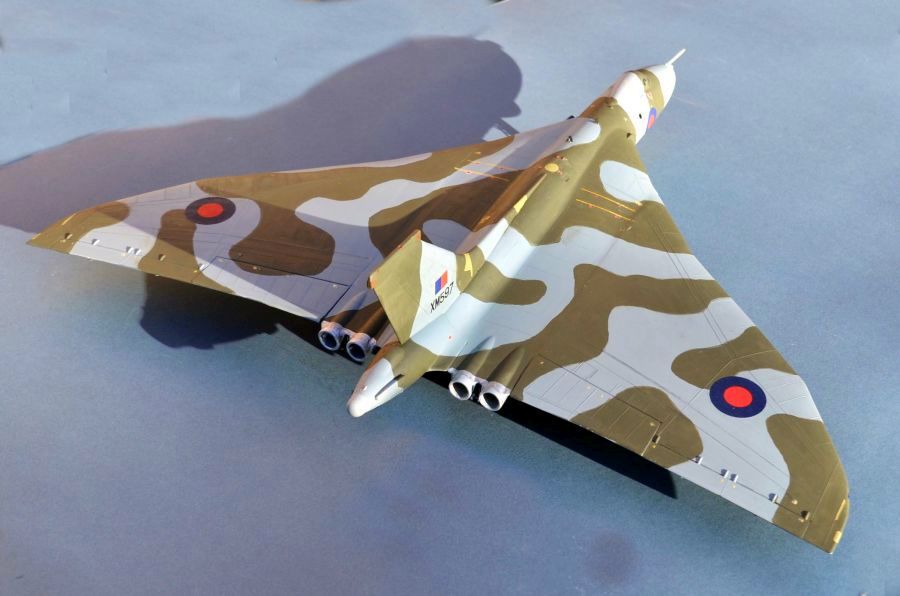
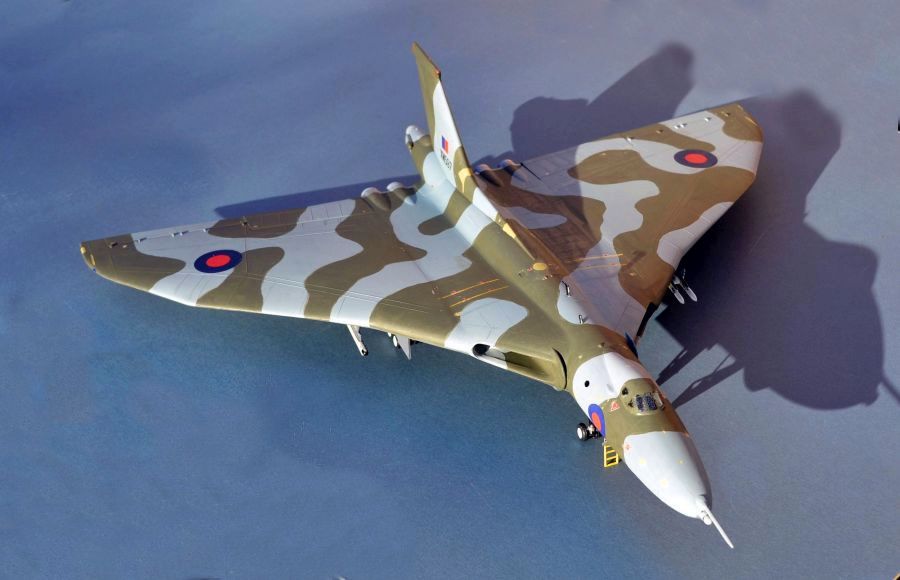
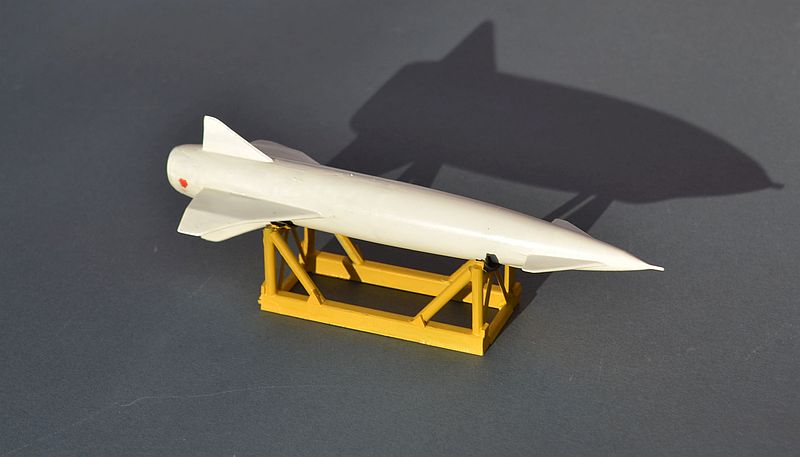
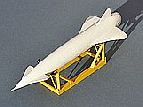
DeHavilland DH100 Vampire FB.5 -
RAF Aldergrove, Northern Ireland, 1956.
This is the1971 FROG 1/72 kit, which is quite crude and simplified, but looks good when complete.

